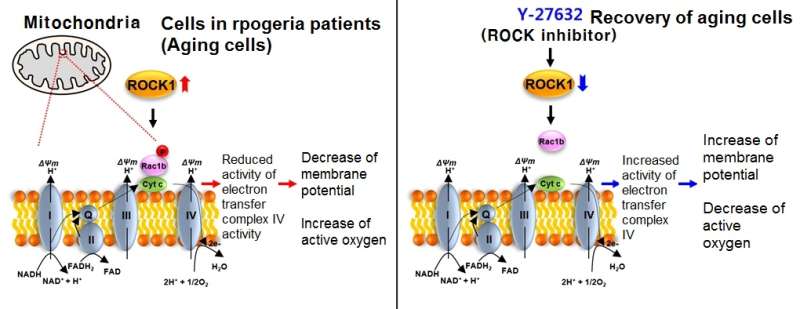Mechanism of aging recovery for progeria patients revealed

DGIST's research team has identified a mechanism that can recover the aging of patients with Hutchinson-Gilford Progeria Syndrome (HGPS). DGIST announced that the Chair Professor Park SangChul of New Biology (Head of Well-Aging Research Center) and the research team led by Professor Lee YoungSam has discovered a drug that can improve the aging of HGPS patients and identified the mechanism of aging recovery by using the drug.
HGPS represents one of premature aging syndromes. The patients with HGPS experience growth retardation as well as age-associated symptoms such as skin wrinkles, hair loss, visual impairment, and cardiovascular diseases. Their average life expectancy is 13 years as they age 10 times faster than others. When it comes to aging control, improvement of biological function and solutions for aging of HGPS patients have been big challenges in academia.
This study needs to be highlighted as the research team has identified the molecular causal relationship between ROCK protein activation and mitochondrial dysfunction in the progression of cell senescence for the first time in the world.
DGIST's research team noted that the level of reactive oxygen species increases when mitochondrial function diminishes during the progression fibroblasts of the HGPS patients. By performing high-throughput screening system, the team found 'Y-27632' as an effective agent to control reactive oxygen species and discovered that this drug is effective in improving mitochondrial function.
Mitochondria are intracellular organelles that play a key role in energy and metabolism in cells. It is known that mitochondrial dysfunction causes aging of cells as it increases level of active oxygen and decreases energy production efficiency.
The research team found that 'Y-27632' drug inhibits the phosphorylation level of ROCK and increases the oxidative phosphorylation efficiency of mitochondria. The study also confirms that the drug recovers mitochondrial function and induces the recovery of aging cells by reducing nuclear membrane degeneration and genetic damage that are characteristics of HGPS patient cells.
The Chair Professor Park SangChul stated "This study is significant as we have newly discovered the means to control aging. We have also identified the mechanism to recover the function of aging cell through inhibition and recovery of mitochondrial dysfunction due to aging." He added "We will continue to carry out studies that will extend the healthy lifespan of humans through the verification of the mechanism in aging animal models as well as progeny animal models."
More information: Hyun Tae Kang et al, Chemical screening identifies ROCK as a target for recovering mitochondrial function in Hutchinson-Gilford progeria syndrome, Aging Cell (2017). DOI: 10.1111/acel.12584


















